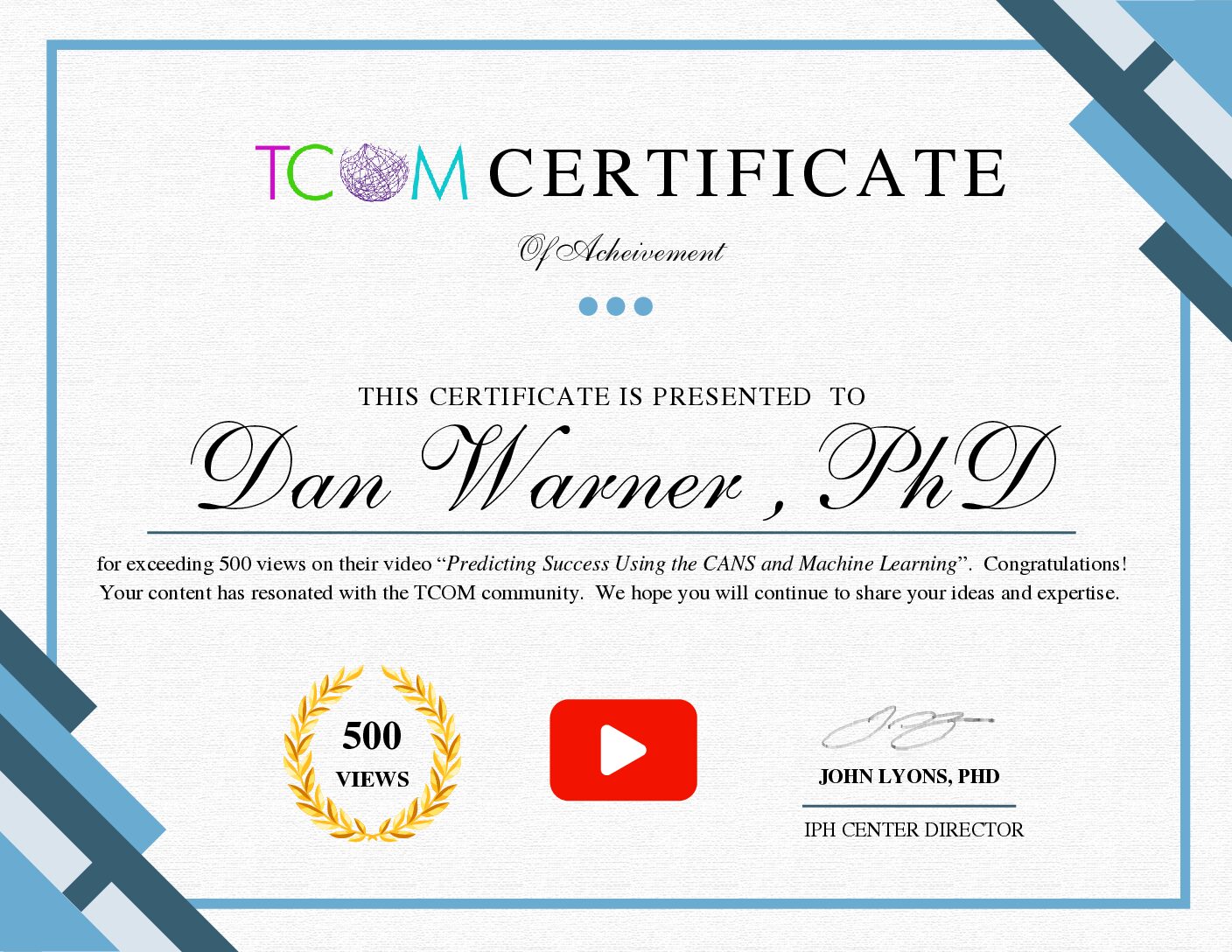We may not be as popular as ‘Baby Shark’ (currently sporting ~13 billion views on Youtube!), however CDR’s video on the use of machine learning to analyze CANS data has earned over 500 views! Our video has been showcased by the University of Kentucky Center for Innovation in Population Health (The “IPH Center”) aka the original CANS experts. We are proud to be included among other innovative TCOM data projects.
CDR’s video was posted about a year ago, as a part of a discussion on an academic paper we published in Children & Youth Services Review in 2021. (You can read that paper here, or read see an extended presentation on the model, see here). However, in such a short amount of time this project has become “old news.”
What do we mean by old news? Well the methods we use in this paper are currently less sophisticated in comparison to what we use at CDR today. Before, we used CANS/TCOM data almost exclusively to predict things about CANS/TCOM data. However, increasingly our team blends TCOM data with administrative data. We shared an example of our more relevant work at the latest TCOM Convention hosted by the University of Kentucky. We presented with our partners at the Allegheny County Department of Human Services where we have been using TCOM data (FAST in particular) to identify profiles of families more likely to experience a home removal, or a child in the court system, etc. These concrete, administrative outcomes provide excellent validation, and are a touchstone for TCOM data.
Furthermore, machine learning’s role in human service data has grown beyond finding trends. For instance, CDR’s spring DataTalk featuring TCOM’s creator, John Lyons, included John’s expertise on a myriad of projects. One project he mentioned involves training machines to listen to evaluations, and provide a draft of a scored CANS to the rater. Another exciting idea that came up, is establishing AI characters with which CANS raters can hone their assessment skills. Students can interview an AI in order to practice information gathering and gain the skills to probe subjects more deeply for insights. This innovation could lead to both improved CANS ratings, and better TCOM practices in the field.
The possibilities for AI abound. The deceptively simple act of scheduling will soon be improved by AI, which can account for a client’s transportation options and specialist preferences. Cognitive behavioral training robots are becoming quite commonplace in Human Services. While it is absolutely true that interpersonal connection will remain the essential ingredient for real therapy at a fundamental level, it’s also true that well refined and focused machines may allow us to extend the impact of our best interventions, and help connect people to the in person supports they need, faster.
This is an exciting time for behavioral health. Our challenges are clear: our diminishing workforce, the rising tide of mental health crises like suicide and drug addiction, and the continued pressures of our stressed planet Earth. However, we also have new and unprecedented resources to strengthen our collective willingness to help. Use of TCOM tools and advanced AI offers us the ability to better understand our clients, and to craft new paths for improvement. We have a lot of information about our struggles and crises, which can help orient our work. Paired with new technology, we can make a bigger impact than ever before. At 500 views of our video, I’m glad CDR can be a (profoundly modest) part of the effort!

